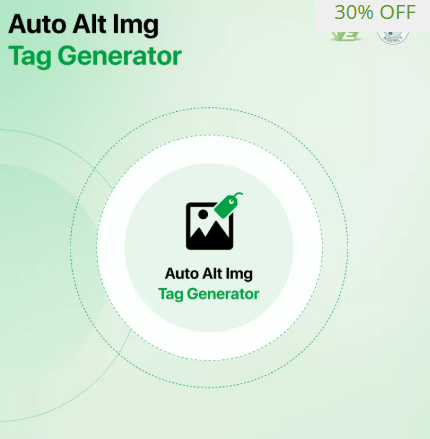
In the digital-first era of online shopping, image-based content plays a significant role in how users interact with e-commerce websites. While product images are crucial for conversion, they also provide an overlooked opportunity to improve your site’s visibility in search engines. One of the simplest yet most impactful ways to leverage this is through optimizing your SEO Alt Tags Prestashop.
Alt tags, or alternative text for images, are often ignored during store setup. However, they serve as a critical element of on-page SEO that can drive traffic to your store through better indexing, improved accessibility, and enhanced mobile-first responsiveness.
Let’s explore how to use SEO alt tags effectively and understand how they contribute to your overall PrestaShop traffic strategy.
What Are SEO Alt Tags?
SEO alt tags are short descriptions added to the HTML of an image element. These tags tell search engines what the image is about and are displayed to users when an image doesn’t load or when they use screen readers.
Alt tags were initially created for accessibility, but today they also help Google and other search engines categorize image content. When optimized correctly, they increase your chances of appearing in both web and image search results—especially for mobile users who make quick, visual-based decisions.
Why Do Alt Tags Matter in PrestaShop?
In a PrestaShop store, where product images dominate pages, SEO alt tags offer several benefits:
-
Improve search engine visibility for product images.
-
Enhance user accessibility on all devices.
-
Align with mobile-first design by improving image readability on small screens.
-
Boost rankings indirectly by improving page relevance and structure.
Google’s mobile-first indexing and focus on user experience mean that detailed and descriptive alt tags are more important than ever for e-commerce sites.
How SEO Alt Tags Drive Traffic to Your PrestaShop Store
Here’s how correctly using alt tags increases organic traffic:
1. Better Image Search Rankings
Many users browse through Google Images to look for products. Properly optimized images can appear in these searches, giving your store another entry point for potential customers.
2. Increased Accessibility
When screen readers scan your website, they rely on alt tags to describe the visual content to users who are blind or visually impaired. This not only improves usability but also aligns with web accessibility standards, which search engines often reward.
3. Lower Bounce Rates
Alt tags ensure users know what a missing image was meant to show. When images fail to load on slow networks, alt text reassures users that they’re still on a trustworthy and functioning site.
4. Higher Relevance Signals
Search engines crawl alt tags alongside content. When your product images include relevant keywords in their alt tags, your page gains more semantic value, improving overall page relevance in organic search.
Step-by-Step Guide to Optimizing SEO Alt Tags in PrestaShop
Step 1: Identify Target Keywords
Use keyword research tools to find relevant, high-intent search terms related to your product images. Focus on long-tail keywords that reflect exactly what’s shown in the image.
Step 2: Add Alt Tags in PrestaShop
To add alt tags:
-
Go to Catalog > Products in the admin dashboard.
-
Select a product.
-
Scroll to the Images section.
-
Add descriptive alt text in the “Legend” or “Alt text” field.
Describe the product naturally, e.g., “Black cotton hoodie with zipper – front view.”
Step 3: Avoid Keyword Stuffing
Use keywords naturally in your alt tags. Don’t repeat them or over-optimize. Keep the text brief—ideally under 125 characters.
Step 4: Optimize All Images
Don’t stop at product photos. Banners, category images, and icons should also have relevant alt tags. Every image is an SEO opportunity.
Step 5: Use Automation Tools if Needed
For stores with hundreds or thousands of products, consider using modules that auto-generate alt tags based on product names or attributes.
Best Practices for Writing Alt Tags in PrestaShop
-
Be Descriptive: Describe exactly what’s in the image.
-
Keep It Unique: Avoid duplicate alt text across multiple images.
-
Stay Relevant: Use product-based or context-specific descriptions.
-
Use Proper Syntax: No special characters, no emojis, no fluff.
-
Align with Responsive Design: Make sure alt text works well even if images are resized or changed for different devices.
How Alt Tags Support Mobile-First Strategy
With the majority of users accessing online stores from mobile devices, responsive design has become a necessity. Mobile-first indexing means Google evaluates the mobile version of your site first, and alt tags contribute to how well your site performs in this mobile-first environment.
Alt tags make images readable by search engines and accessible to users regardless of their device. This means your PrestaShop store gains SEO value without depending solely on text-heavy descriptions.
Monitor and Improve with SEO Tools
To ensure your efforts pay off:
-
Use tools like Google Search Console to check for image indexing and performance.
-
Run an SEO audit using tools like Screaming Frog to identify missing or duplicate alt tags.
-
Update outdated or non-descriptive alt tags based on new keyword insights.
Common Mistakes to Avoid
-
Leaving alt tags blank.
-
Using non-descriptive file names like “IMG123.jpg.”
-
Stuffing alt text with too many keywords.
-
Reusing the same alt tag across many images.
-
Forgetting to optimize decorative or UI images.
Avoid these pitfalls to ensure that each alt tag adds SEO value and improves user experience.
Conclusion
Optimizing SEO Alt Tags Prestashop is one of the simplest yet most effective ways to increase your store’s visibility in search engines and image search results. By creating relevant, keyword-rich, and descriptive alt tags, you boost your PrestaShop store’s mobile-first SEO, accessibility, and usability.
When combined with fast-loading images, a responsive layout, and strong internal linking, well-crafted alt tags help build a solid foundation for sustainable traffic growth in your PrestaShop store.


